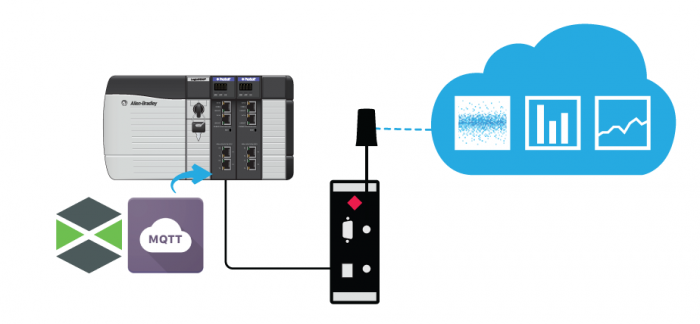Connecting Diverse Protocols to Reach IIoT Benefits

Connecting Diverse Protocols to Reach IIoT Benefits
The Industrial Internet of Things – or IIoT – is no longer a buzz phrase. Real, tangible benefits can be realized if your IIoT strategy is implemented correctly. Some of these benefits include predictive maintenance that can help reduce downtime, a reduction in mean time to repair, easier flow and sharing of information across different parts of an organization, and optimization in packaging, logistics, and much more.
Let’s take a step back to understand the IIoT’s definition. The IIoT can be described as a process where one leverages data from connected equipment. This combines with real-time analytics to drive business decisions, precisely and speedily, leading to the benefits stated earlier.
The key is data. Data sources include machines, software systems, and field devices such as sensors. The machine languages used by these different data sources to communicate are called protocols. Example protocols include Modbus®, EtherNet/IP™, DNP3, IEC, SQL, ASCII, and many more. These protocols are not compatible with each other. The protocols provide similar types of information, though – status of a sensor, a particular machine state, and alarm information and/or diagnostics.
Leveraging the IIoT
As stated earlier, implementing the IIoT consists of two main parts – getting data from different sources and then analyzing the data. To analyze efficiently, the data has to be in one language or format. Think about having a classroom full of students where each student speaks a different language. You will either need a teacher who understands all the different languages or all students must understand a common language. It is obvious which option will be more efficient!
In the industrial world, taking the many different protocols and providing the information via a single language is called protocol translation. Some common IIoT protocols include OPC (Open Platform Communications), MQTT (Message Queue Telemetry Transport protocol), and AMQP (Advanced Message Queuing Protocol). The translations will be from Modbus or EtherNet/IP or DNP3 to MQTT or a similar IIoT protocol. IIoT analytical platforms like PTC’s ThingWorx operate more efficiently if the data from multiple sources is in the same format or language.
Protocol translators play an important role in converting industrial protocols like Modbus and EtherNet/IP to IIoT-related protocols like MQTT. Some protocol translators (such as the Linux Development Module) take this one step further and provide direct connectivity via an IIoT analytical platform like ThingWorx. The benefit of such a solution is the ability to get plant-floor data directly to an IIoT platform for analytics.
Recall that the benefits of the IIoT can include increased efficiency, the ability to make informed business decisions speedily, and the enablement of information flow across all parts of the organization. To achieve this, access to reliable data in a single protocol is a must. Protocol translators can help convert current and legacy industrial protocols to IIoT protocols like MQTT.
Learn more about the Linux Development Module for ControlLogix® and CompactLogix™.

